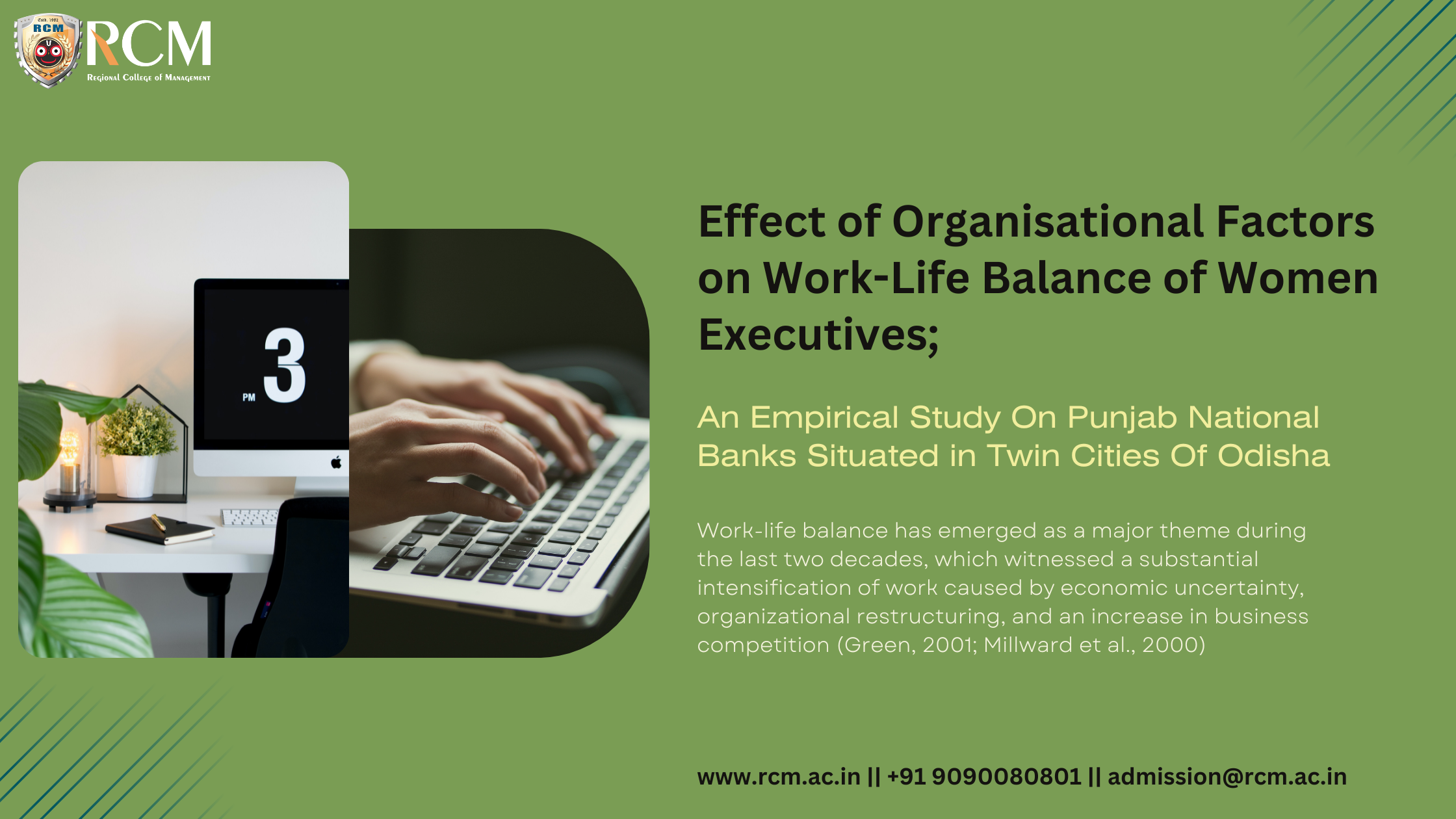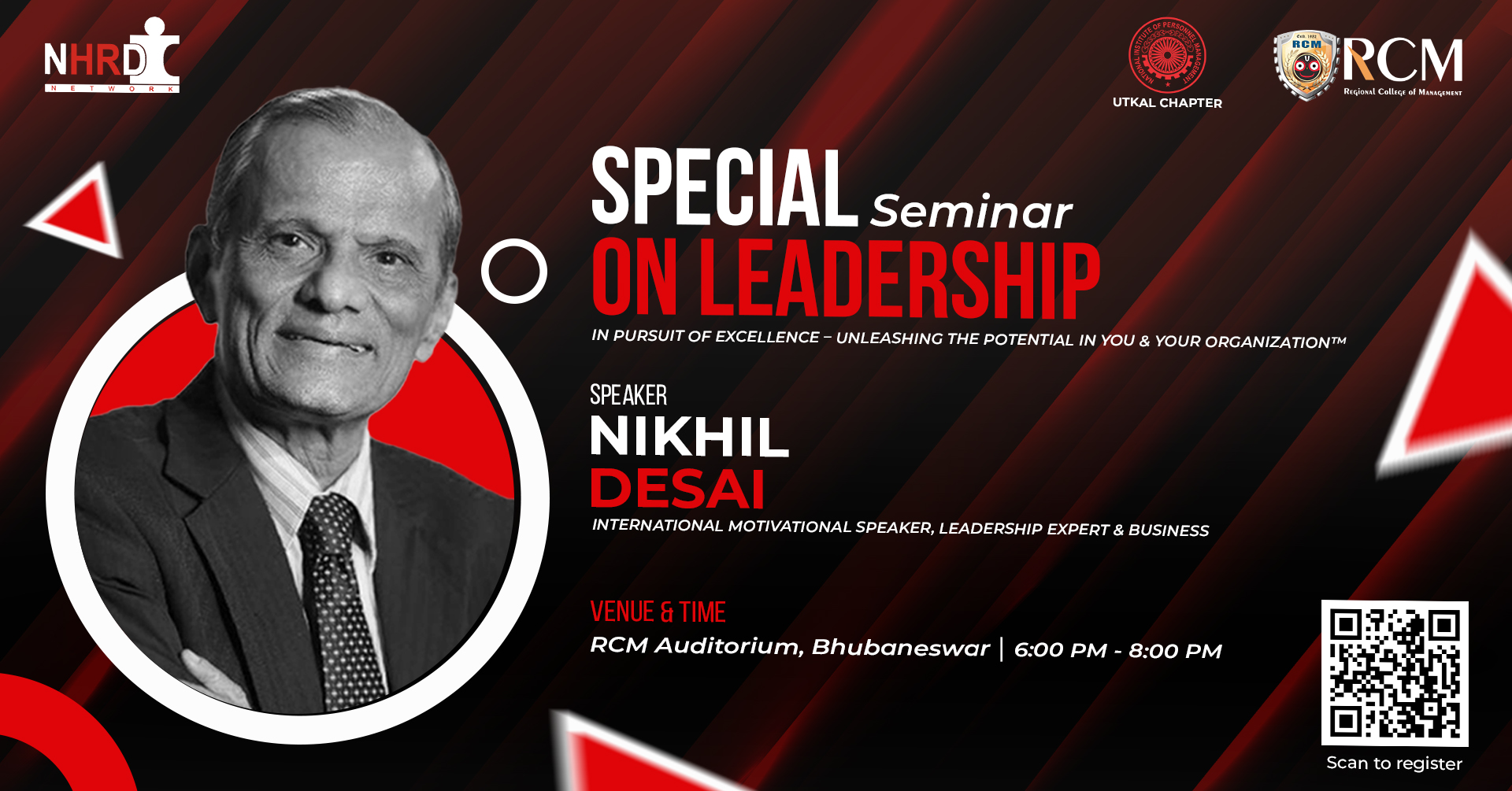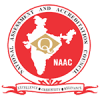Written By, Pragyan Paramita Das1 || Dr. Sumitra Murmu2
1Assistant Professor, RCM, BBSR & Research Scholar, MIR Department, Utkal University, Bhubaneswar, Odisha, India
2Assistant Professor, PMIR Department, Utkal University, Bhubaneswar, Odisha, India
ABSTRACT
The concept of work-life balance means proper prioritizing between organizational and personal factors. In another way, it is about managing both environments in such a way so that both professional and personal life can be enjoyed to the satisfaction. Today, employees are treated as an asset and they are basically the face of the company.
Unless and until this group is not motivated enough, then surely it will dilute the entire process of development mechanism of the organization. Business units or companies have to keep in terms of an increase in demand to improve efficiency and also respond positively to their customers, and stakeholders. Employers, on the other hand, are facing internal pressure from employees who are seeking employment that allows a developing career, talent utilization, and opportunity to have a life outside office.
Currently, jobs are no more only about pay and promotions, rather employees and job seekers are looking for employment or deciding on jobs based on how well can the workplace, current or potential, can contribute to balancing their work and personal lives.
No longer is it just a matter of remuneration and promotional prospects; job seekers are increasingly basing employment decisions on how well their current or potential workplace can support a balance between personal lives and performance acquaintances.
For an organization to survive in this competitive market, it is needed to derive the most from its workforce. And to do this, employees have to feel that their company takes cognizance of their needs in and out of work. In return, they grow to be more productive, more responsive, and more loyal to their employer. In the last two decades, there has been an increased focus on work-life balance which can be due to changes in the income and family structures like double income families, small and nuclear families, single parents, and increased participation of women in the workforce.
KEYWORDS: Increase in Demand to Improve Efficiency and also Respond Positively to their Customers, Stakeholders. Employers, Increasingly Basing Employment Decisions
Article History
Received: 01 Dec 2021 | Revised: 02 Dec 2021 | Accepted: 04 Dec 2021
Introduction
Today the upcoming challenge for any organization is to develop the required capabilities to attract, stimulate and maintain a highly trained, flexible organizational culture and adapt to change the workforce. Every organization is based on the concept of “going concern”. And for this organizations have to survive in the increasingly competitive market. Hence organizations incorporate and develop the existing work-life balance strategies that cater to the diverse aspirations of the workforce.
Work-life balance has emerged as a major theme during the last two decades, which witnessed a substantial intensification of work caused by economic uncertainty, organizational restructuring, and an increase in business competition (Green, 2001; Millward et al.,2000). This prolific change in the organization’s environment has mandated the organizations to demand more working hours and higher levels of commitment from their employees. And with the alteration in demography, society, and culture over the last few decades has made it difficult for individuals to find a proper, if not perfect, balance between their work and personal lives.
The possible reasons that could be cited for the increase in work-family conflict could be many including higher participation of female members in this growing nature of the workforce (work hours, incentives, work environments, etc,), role expectations from family, more nuclear couples, an increased presence of work in the personal lives of individuals and individual’s or couple’s desire to have an enhanced quality of life by enjoying their free time and leisure time activities.
In the process, this study has focused on exploring the challenges of work-life balance faced by women employees of a public sector Bank, Punjab National Bank, (PNB) operating in the twin cities Bhubaneswar and Cuttack in the state of Odisha. Accordingly, an empirical study has been conducted by collecting the desired information from 230 female respondents of PNB from Bhubaneswar and Cuttack Branches.
The Objective of The Study
This study intends to find out the role of organizational factors affecting the work-life balance of female executives of PNB from the Cuttack and Bhubaneswar branches.
Organizational factors taken for this study are
- Work Schedule
- Work Environment
- Organizational policies.
The Base of Demographic Distribution
We considered age groups—Young, Middle Age, and Senior executives—to study how organizational factors affect the work-life balance in all PNB banks of Bhubaneswar and Cuttack. Our study used the demographic driver of age, specifically targeting different employee age groups in the PNB branches of Bhubaneswar and Cuttack. Age remains one of the most commonly asked demographic questions in surveys. Researchers often determine a person’s age based on her knowledge and experience relevant to the focus of the study. Survey designers usually prioritize age-related questions when gathering demographic information.
Studies across various scientific disciplines have shown that different age groups express different opinions on a wide range of topics. Because some people consider age a sensitive topic, we used non-overlapping categories to ensure each data point fits into a single age group. We categorized respondents into three distinct groups: up to 35 years as young, 35–45 years as middle-aged, and above 45 years as senior. The following Table 1.1 presents the age-wise distribution of the sample used in the study.
Table 1.1: Distribution of Sample Young, Middle-aged and Senior Respondents from PNB
| AGE GROUP | PNB | |
| Young | N | 92 |
| % | 40.0% | |
| Middle | N | 93 |
| % | 40.4% | |
| Senior | N | 45 |
| % | 19.6% | |
| Total | N | 230 |
| % | 100.0% |
In the public sector Bank PNB, 230 women respondents have shared their views. Out of these 230 respondents, 92 (40.0%), 93 (40.4%), and 45 (19.6%) are young, middle-aged, and senior persons respectively. It is observed that in PNB young and middle-aged are equally poised
Analysis
Even though theorists have not defined this concept precisely, we have explored it broadly by considering both organizational and personal aspects. We have designed 25 questions to gather responses about various organizational factors affecting work-life balance. Respondents answered all the questions using a 5-point Likert scale. For quantification, we have coded “strongly disagree,” “disagree,” “neutral,” “agree,” and “strongly agree” as 1, 2, 3, 4, and 5 respectively. We now intend to highlight inter-correlated aspects using exploratory factor analysis. This method clusters similar aspects into a single factor, which we have named based on their shared characteristics. We have presented the resulting factors in Table 1 and Table 2.
Table 1.2: Exploratory Factor Analysis on Organisational Factors
| KMO and Bartlett’s Test | ||
| Kaiser-Meyer-Olkin Measure of Sampling Adequacy. | 0.700 | |
| Bartlett’s Test of Sphericity | Approx. Chi-Square | 7340.789 |
| df | 300 | |
| Sig. | 0.000 | |
| Component | Initial Eigenvalues | Rotation Sums of Squared Loadings | ||||
| Total | % of Variance | Cumulative % | Total | % of Variance | Cumulative % | |
| 1 | 6.907 | 27.628 | 27.628 | 5.131 | 20.524 | 20.524 |
| 2 | 3.323 | 13.291 | 40.919 | 4.039 | 16.156 | 36.680 |
| 3 | 2.836 | 11.343 | 52.262 | 3.895 | 15.582 | 52.262 |
| 4 | 1.891 | 7.562 | 59.824 | |||
| 5 | 1.359 | 5.435 | 65.260 | |||
| 6 | 1.282 | 5.129 | 70.388 | |||
| 7 | 1.045 | 4.180 | 74.568 | |||
| 8 | 0.906 | 3.622 | 78.190 | |||
| 9 | 0.723 | 2.890 | 81.080 | |||
| 10 | 0.652 | 2.608 | 83.688 | |||
| 11 | 0.533 | 2.130 | 85.818 | |||
| 12 | 0.502 | 2.007 | 87.826 | |||
| 13 | 0.487 | 1.948 | 89.774 | |||
| 14 | 0.400 | 1.600 | 91.374 | |||
Table 2 Contd.
| 15 | 0.374 | 1.497 | 92.870 | |||
| 16 | 0.319 | 1.277 | 94.148 | |||
| 17 | 0.271 | 1.085 | 95.233 | |||
| 18 | 0.240 | 0.958 | 96.191 | |||
| 19 | 0.215 | 0.861 | 97.052 | |||
| 20 | 0.195 | 0.779 | 97.831 | |||
| 21 | 0.164 | 0.658 | 98.489 | |||
| 22 | 0.130 | 0.519 | 99.008 | |||
| 23 | 0.113 | 0.451 | 99.459 | |||
| 24 | 0.085 | 0.340 | 99.799 | |||
| 25 | 0.050 | 0.201 | 100.000 |
Rotated Component Matrixa
| Component | |||
| 1 | 2 | 3 | |
| Work more than 6 days in a week. | 0.576 | ||
| Work more than 12 hours in a day. | 0.683 | ||
| Work in shifts. | -0.557 | ||
| Worry about work. | -0.753 | ||
| Job sharing. | 0.437 | ||
| Career break/sabbaticals. | 0.645 | ||
| Opportunity to return to the same job after maternity leave. | 0.721 | ||
| Health programs. | 0.812 | ||
| Family support programs. | 0.769 | ||
| Exercise facilities. | 0.605 | ||
| Paid Maternity leaves. | 0.549 | ||
| The organization encourages the involvement of family members in work achievement reward function. | 0.627 | ||
| Organizations arrange social functions at suitable times for families. | 0.747 | ||
| The work-life balance policy of the organization is customized for individuals. | 0.653 | ||
| Never have a chance to breathe before moving to next project. | 0.744 | ||
| The work-life balance policy of the organization is customized for individuals. | -0.506 | ||
| Work schedule suffers from stress-related disease. | 0.69 | ||
| Able to manage stress arising from work. | -0.496 | ||
| Feel wasting of time when not accomplishing something. | 0.594 | ||
| Ever feel tired or depressed because of work? | 0.602 | ||
| Take consecutive full weeks of vacation each year. | -0.659 | ||
| Use vacation days and personal days each year. | -0.844 | ||
| Frequently delegate work to others. | -0.5 | ||
| Ever feel tired or depressed because of work | -0.558 | ||
| Not getting time for work out. | 0.471 | ||
| Extraction Method: Principal Component Analysis. Rotation Method: Varimax with Kaiser Normalization. | |||
| a. Rotation converged in 8 iterations. | |||
11.343% respectively for the second and third components respectively. The total cumulative variance for the above three components has been found to be 52.262%.
The last part shows the three sets of interrelated dimensions with factor loading for each. Each dimension has some loadings for each of the three factors. One particular aspect has been chosen to report for a particular factor is based on the highest loading and more than 0.4 of that aspect. Accordingly, “Work more than 6 days in a week” (0.576), “Work more than 12 hours in a day” (0.683), “Work in shifts” (-0.557), “Worry about work” (-0.753) and “Job sharing” (0.437) have been considered for Factor-1.
In consideration of their similar characteristics, Factor-1 has the nomenclature “Work Schedule” for subsequent analysis. Similarly, “Career break/sabbaticals” (0.645), “Counselling services” (0.721), “Health programs” (0.812), “Family support programs” (0.769), “Exercise facilities” (0.605), “Paid paternity leaves” (0.549), “Opportunity to return to the same job after maternity/paternity leave” (0.627), “Organization encourages the involvement of family members in work achievement reward function” (0.747), “Organization arrange social functions at suitable times for family” (0.653), “Work life balance policy of organization customized for individual” (0.744) and “Good work-life balance of employees will be more effective for organization” (-0.506) have been considered for Factor-2.
In consideration of their similar characteristics, Factor-2 has the nomenclature “Working Environment” for subsequent analysis. Further, “Work schedule suffer from stress-related disease” (0.69), “Able to manage stress arising from work” (0.496), “Feel wasting of time when not accomplishing something” (0.594), “Never have a chance to breath before moving to next project” (0.602), “Take consecutive full weeks of vacation each year” (-0.659), “Use vacation days and personal days each year” (0.844), “Frequently delegate work to others” (-0.5), “Ever feel tired or depressed because of work” (0.558) and “Not getting time for work out” (0.471) have been considered for Factor-3. In consideration of their similar characteristics, Factor-3 has the nomenclature “Organizational Policies” for subsequent analysis.
Variance in Organizational Factors of PNB Employees
As discussed above, organizational factors have to be dealt with suitably to maintain a proper work-life balance. The following will present the results obtained in the case of women employees of PNB belonging to different age groups and marital statuses. The results have been obtained for three organizational factors work schedule, working environment, and organizational policies.
Table 1.3: Analysis of Variance in Opinion of PNB Employees of Various Age Groups towards Different Organizational Factors
| Sum of Squares | df | Mean Square | F | ||
| Work Schedule | Between Age Groups | 0.873 | 2 | 0.437 | 1.750 NS |
| Within Age Groups | 56.637 | 227 | 0.250 | ||
| Total | 57.510 | 229 | |||
| Working Environment | Between Age Groups | 2.749 | 2 | 1.374 | 9.384* |
| Within Age Groups | 33.244 | 227 | 0.146 | ||
| Total | 35.993 | 229 | |||
| Organizational Policies | Between Age Groups | 0.733 | 2 | 0.366 | 14.090* |
| Within Age Groups | 5.901 | 227 | 0.026 | ||
| Total | 6.634 | 229 | |||
Table-1.3 presents the results obtained on the application of Analysis of Variance (ANOVA) over the opinions of women employees of PNB towards work schedule, working environment, and organizational policies of different age groups. The F-value shown against the work schedule (1.750) is not significant at the 5% level (P>0.05). This indicates the
Hence, different opinions towards organizational policies may be obtained from women employees of different age groups of PNB. In order to study further details, the inter-comparison of means of different age groups has been done with the help of Duncan’s Multiple Range Test and the results so obtained have been presented in Table-1.4
Table-1.4: Mean, SD of Opinion of PNB Employees of Various Age Groups Towards Different Organizational Factors
| N | Mean | Std. Deviation | ||
| Work Schedule | Young | 92 | 2.57 | 0.56 |
| Middle | 93 | 2.54 | 0.53 | |
| Senior | 45 | 2.50 | 0.26 | |
| Total | 230 | 2.52 | 0.50 | |
| Working Environment | Young | 92 | 4.55 A | 0.41 |
| Middle | 93 | 4.60 A | 0.37 | |
| Senior | 45 | 4.31B | 0.35 | |
| Total | 230 | 4.53 | 0.40 | |
| Organizational Policies | Young | 92 | 3.03D | 0.15 |
| Middle | 93 | 3.32E | 0.17 | |
| Senior | 45 | 3.38E | 0.17 | |
| Total | 230 | 3.10 | 0.17 | |

Figure-1: Mean Opinion of PNB Employees of Various Age Groups Towards Different Organizational Factors.
Table 1.4 and Figure-1 present the age-wise mean responses of women employees of PNB on work schedules, working environments, and organizational policies. The mean responses of young, middle, and senior employees of PNB are 2.57, 2.54, and 2.50 respectively towards work schedules. In reference to the non-significant F-value (1.750) shown in Table-4.5, indicates these mean values are similar even though they are numerically different.
Hence, in view of the magnitude of these mean values, it may be inferred that women employees of PNB are neutral towards work schedules irrespective of their age. Further, the mean responses of young, middle, and senior employees of PNB are 4.55, 4.60 and
4.31 respectively towards the working environment. In reference to the significant F-value (9.384) shown in Table-4.5, indicates these mean values may be different from each other. Here for inter-group comparison, Duncan’s Multiple Range Test is done. It is observed that the mean of young (4.55) and middle (4.60) have the same superscript “A” indicating their similarity and differences from the mean of senior (4.31) with superscript “B”.
We inferred from the magnitude of the mean values that young and middle-aged women employees of PNB agreed more on the working environment than their senior counterparts. Young, middle-aged, and senior employees of PNB responded with mean scores of 3.03, 3.12, and 3.18 respectively towards organizational policies. The significant F-value (14.090) shown in Table-4.5 indicates that these mean values may not differ significantly. We used Duncan’s Multiple Range Test for inter-group comparison.
We observed that the middle-aged (3.32) and senior (3.38) employees shared the same superscript “E,” indicating their similarity. Their scores differed from the young group’s mean (3.03), which carried the superscript “D.” We inferred from these mean values that middle-aged and senior women employees of PNB showed a more neutral stance on organizational policies than their younger counterparts.
Variance on Work-Life Balance of PNB Employees
The following will present the results obtained for work-life balance in the case of women employees of PNB Bank belonging to different age groups and marital status. The results have been obtained by aggregating two aspects of work-life balance.
Table 1.5: Analysis of Variance in Opinion of PNB Employees of Various Age Groups towards Work-Life Balance
| Sum of Squares | df | Mean Square | F | |
| Between Age Groups | 4.514 | 2 | 2.257 | 2.082 NS |
| Within Age Groups | 246.121 | 227 | 1.084 | |
| Total | 250.636 | 229 |
N.B:- NS – Not Significant at 5% level (P>0.05).
Table-1.5 above presents the results obtained on the application of Analysis of Variance (ANOVA) on the overall score towards the work-life balance of PNB employees of various age groups. The F-value has been computed as 2.082 is not significant at 5% level (P>0.05). This indicates the variation in scores toward work-life balance is not significant and supposed to be uniform in respect of age groups. The mean scores are presented in Table-1.5
Table 1.6: Mean, SD of Opinion of PNB Employees of Various Age Groups Towards Work-Life Balance
| N | Mean | Std. Deviation | |
| Young | 92 | 4.13 | 0.70 |
| Middle | 93 | 4.03 | 1.16 |
| Senior | 45 | 4.10 | 1.33 |
| Total | 230 | 4.16 | 1.05 |
Table-1.6 presents the mean scores of the overall work-life balance of employees of PNB. The young, middle-aged, and senior employees have mean overall scores of work-life balance of 4.13, 4.03, and 4.10 respectively. The computed non-significant F-value (2.082) shown in Table-1.5 indicates their similarity irrespective of their difference in magnitude. Accordingly, in consideration of these mean values, young, middle-aged, and seniors agreed toward work-life balance. Hence, the employees of PNB maintain a good work-life balance irrespective of their age.
Findings & Conclusion
Application of exploratory factor analysis with principal component analysis for extraction and varimax rotation with Kaiser normalization over 230 respondents and 25 aspects on organizational factors signals for congregation of similar aspects into groups. The three factors having nomenclature “Work Schedule”, “Working Environment” and “Organizational Policies” have been identified with the highest factor loading of the similar aspects.
Variance in Organizational Factors of PNB Employees
- ANOVA on organizational factors of PNB employees reveals that uniform opinion towards work schedule (F=1.750) is obtained from women employees of PNB irrespective of their age. Also, variation in opinions of employees of PNB of different age groups is witnessed towards the working environment (F=9.384) and organizational policies (14.090).
- Duncan’s Multiple Range Test (DMRT) for multiple means comparison reveals that women employees in all age groups of PNB are neutral over their work schedule. But, in the case of the working environment, women employees of PNB within the middle age are more agreed than seniors. Also, women employees above middle-aged are more neutral on organizational policies than young.
Impact of Organizational Factors on Work-Life Balance of PNB Employees Young PNB Employees
- Work schedule has a negative significant correlation with work-life balance.
- Working environment and organizational policies have a positive significant correlation with work-life balance.
- In the event of judging the impacts of individual organizational factors while they are congregated, the work schedule has the highest negative impact followed by positive impacts of the working environment and organizational policies over work-life balance.
Middle-Aged PNB Employees
- Work schedule has a negative significant correlation with work-life balance.
- Working environment and organizational policies have a positive significant correlation with work-life balance.
- When we judged the impacts of individual organizational factors collectively, we found that the work schedule had the highest negative impact on work-life balance, while the working environment and organizational policies had positive impacts.
Senior PNB Employees
- Work schedule has a positive significant correlation with work-life balance.
- When we judged the impacts of individual organizational factors together, we found that the work schedule had the highest positive impact on work-life balance, followed by the negative impact of the working environment and the positive impact of organizational policies.
- When we judged the impacts of individual organizational factors together, we found that organizational policies had the highest negative impact on work-life balance, followed by the working environment, while the work schedule had the least impact.
Conclusion
From the above findings, it is clear that organizational factors like work schedule, working environment, and organizational policies have a significant effect on maintaining, and balancing the work life at home and organization. Depending upon the demographic factor like age group, the organizational factors have different impacts and effects on work-life balance. But the significant role of organizational factors on women employees in maintaining work-life balance cannot be denied. It has a profound effect on their both professional and personal life. Hence organizations should take care of various factors like policies, schedules, work timing, work environment, etc to have a positive effect on employees’ life which helps further in maintaining a good work-life balance.
References
- K. Thriveni Kumari & Dr. V. Rama Devi, (2015) “Work-Life balance of Women employees in selected service sectors”, published in Pacific Business Review International, Volume 7, Issue 10, April 2015.
- Nidhi Agarwal, (2015), “Work-Life Balance in E- Age: A Study of Women Employees” published in International Journal of Computer Science And Technology 79, IJCST Vol. 6, Issue1, Spl- 1 Jan-March 2015.
- S. Geetha and Dr. R. Rajendran (2016), “Comparative Study of Work-Life Balance among Private and Public Sector Banking Employees in Perambalur District”, published in IJRDO-Journal of Applied Management Science ISSN: 2455-9229, Volume-3, Issue-11, November 2017, Paper-1
- D.S.R. Adikaram, Dr. Lakmini, V. K. Jayatilake, (2016), “ Impact of work-life balance on employee’s job satisfaction in private sector commercial banks of Sri Lanka” published in International Journal of Scientific Research and Innovative Technology, Vol. 3, No. 11; November 2016
- Ganesha H. L. & DR. Laxmisha A. S. (2018) “Work-Life Balance among Women Bank Employees”, published in Pune Research Discovery, An International Journal of Advance Studies, Volume-3, Issue 2, (May-July, 2018)
- Syeda Soophiya Mariyum and Badiuddin Ahmed, (2018), “Comparative differences between the Work-Life Balance policies implementation among women employees of public sector banks to private sector banks in the banking sector of Telangana State” published in International Research Journal of Management Sociology & Humanities, Volume-9, Issue-7.
- Dr. Seema Malik & Ms. Jyoti Dhouchak (2018), “Work-Life Balance of Women Employees in Education Sector” published in International Journal of Research, Volume 05 Issue 12 April 2018
- R. Banurekha, Thangaraj S, Santhosh P, Srihari V,(2018), “Work-Life Balance on Women Employees in Banking Sector, published in International Journal of Research in Engineering and Management, Vol. 4, 2020, pp.319 – 334.
- Dr. M. Rama Satyanarayana, (2020) “Work-Life Balance of Women Employees in Information
- Technology in Hyderabad” published in Mukt Shabd Journal, I, volume-1X, Issue VIII, August 2020.
- P. Ashok Kumar & Dr. K. Sundar, (2012), “Problems faced by women executives working in public sector banks in Puducherry” published in International Journal of Marketing, Financial Services & Management Research Vol.1 Issue 7, July 2012.
